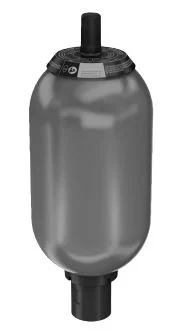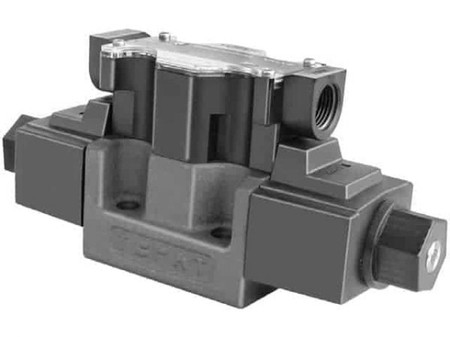RIM Mix Heads: Essential Best Practices
- rtexer
- Jul 25
- 5 min read

Mastering RIM (Reaction Injection Molding) mix heads is fundamental for getting the best results in your production processes. This guide provides clear best practices for RIM mix heads. Whether you're a maintenance technician or an engineer, these practices will boost efficiency, increase productivity, and improve product quality.
1) Mesamoll Recirculation
It may surprise you to see this Number 1 on our list, but it's there for a reason. At MHR we have been exposed to many RIM Production environments, and this is one of the best suggestions we have for maximizing the service life on your mix head. Our customers who use these systems have the highest shot counts on average.
Mesamoll recirculation involves a simple pump system that recirculates Mesamoll (or similar plasticizer) through the window on the cleanout cylinder of the mix head. The Mesamoll material gets changed out on a regular interval (often weekly).
The benefits of the system are huge. The Mesamoll keeps any foam stuck to the cleanout rod soft, which helps prevent wear on the hydraulic seals. It also lubricates the cleanout rod, preventing sticking. Finally, it can help dissipate heat in scenarios where the rod is cycling frequently.
Many Mix Head models do not have a window for recirculating material. You can still benefit from using a plasticizer by dipping the nose nozzle in a cup of Mesamoll, then cycling the Cleanout Rod manually 3-5 times. We suggest doing this at each break (morning, lunch, and end of shift) at minimum.
MHR can help provide a Mesamoll Recirc System and Mesamoll to help maximize the life of your Mix Head. Reach out to us for more information!

2) Hydraulics System Review
It is very common for MHR to receive Mix Heads that have failed due to hydraulic system issues. Over time, hydraulic system components wear or break down. Unfortunately, the Mix Head sometimes becomes the "fuse" that highlights the system failure.
Improper System Components:
Pumps, valves, accumulators, and hoses get replaced over time - occasionally with improperly sized components. This can lead to a system that "works" but may not be ideal for the operation of the Mix Head.
Pressure Adjustments:
Often, pressure is adjusted up (sometimes WAY up) when experiencing rod sticking, and then when the issue resolves it is left at that high setting. This creates a condition where the hydraulic pressure is much higher than it needs to be. While the seals on most mix heads are rated to 3000 psi, best practice is to run the hydraulic pressure as low as possible while maintaining continuous production.
Changes to Production Requirements:
The hydraulic system is sized for a certain throughput and duty cycle. It may be that production demands have increased, and the mix head is cycling faster, more frequently, or both. The hydraulic system may not be adequate to keep up with the increased demand.
MHR recommends having a Hydraulics professional review your hydraulic system. They will need to know operating information about your system, such as details on the fluid reservoir capacity, pump type (e.g., gear, vane, piston), flow rate, and maximum pressure, filter type and micron rating, control valve type (e.g., directional, pressure, flow) and actuation method, mix head cylinder information (e.g., cylinder bore and stroke, frequency and duration of shot), hose/pipe size and pressure rating, the type of hydraulic fluid, and possibly other information as well.
Very likely they will be able to make recommendations on how to improve your hydraulic system to maximize the life and operation of your mix head. Properly specified hydraulic equipment will also keep your production line running reliably. If you need help finding a qualified individual Reach Out to MHR for more information.
3) Rod Timing
For "L-head" style mix heads, the interaction between the "Pour" or "Shot" piston rod and the "Cleanout" rod is vital to properly dispensed material. Improper timing can lead to significantly reduced service life on the mix head.
When a shot is taken the Pour Rod should close first, followed by a small delay. Next, the Cleanout Rod closes, ejecting the remaining material out of the mix head.
If the Cleanout Rod starts to close before the Pour Rod has fully closed, it will block off the Pour Bore. This in turn causes the remaining material in the Pour Bore (mix chamber) to be under very high pressures. This material in turn is then pushed into places where it should not go, such as backward up the cleanout bore, or around the Pour Rod. This can create material buildup and/or crossover.
In an attempt to reduce cycle times, technicians can sometimes reduce or eliminate the delay between the Pour and Cleanout rods closing without understanding the possible ramifications.
MHR recommends verifying that there is a delay between the shot piston closing and the cleanout piston closing. This is best done by monitoring the hydraulic valve outputs on a time graph. We recommend at least a 0.25 to 0.5 second delay.
4) Spare Parts
Keeping the right spare parts readily available is essential for reducing downtime and maintaining seamless production. A well-stocked inventory will facilitate quick repairs, minimizing interruptions.
At bare minimum, MHR recommends keeping at least one of the following items on hand at all times to minimize your production downtime:
Mix Head
Prox Switches
Orifice Assemblies (one each for Poly and ISO)
Spare O-rings for Orifice Assemblies
All Hydraulic Fittings - especially if your mix head has a specialty hydraulic connection
MHR can help source any of these items, including spare mix heads for any manufacturer. We keep Orifice Assemblies, Prox Switches, and O-rings in stock for most models. We can also help source hydraulic fittings if desired. Reach Out for more information!
5) Orifice Replacement & Calibration
MHR Recommends replacing the orifice assemblies (both Poly and ISO) on a regular basis. Over time material can build up on the orifice or inside the orifice assembly. This can lead to more frequent pressure adjustments or incorrect injection pressures. The frequency of replacement can vary based on the chemistry involved. Once per month is generally a good starting point, and you can increase or decrease the frequency of replacement based on how clean the orifice assemblies are when they come off.
The orifice assemblies can be swapped with spare units and cleaned to be re-used in the future. This again highlights the importance of having at least one set of orifice assemblies on hand at all times.
After replacing the orifices, performing a calibration is also recommended. While this won't necessarily increase uptime, it will help ensure a quality product.
Calibration procedures for mix heads involve measuring the total volume or weight of liquid dispensed over a specific time duration and comparing this to expected values. Some systems are capable of calibrating the Poly and ISO separately. Consult your machines operational manual to determine the proper calibration procedure and add the procedure to your maintenance schedule.














Comments